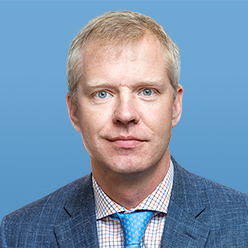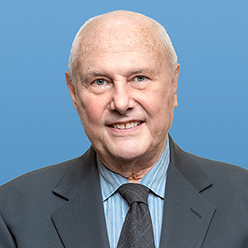On October 24, 2018, the Central Asia-Caucasus Institute (CACI) at the American Foreign Policy Council hosted a Forum entitled, “Can Regionalism Drive Development in Central Asia?”. Speakers included CACI Chairman Frederick Starr, Lead Economist in the World Bank’s Europe and Central Asia Region David M. Gould, and Rohullah Osmani of the Asian Development Bank’s North America Representative Office. CACI Senior Fellow Mamuka Tsereteli moderated the event. During the Forum, the speakers addressed a number of topics, including the history of regionalism in Central Asia, the economic benefits regionalism will bring, and how international institutions such as the World Bank and Asian Development Bank are contributing to economic development.
CACI Chairman Frederick Starr began the Forum by introducing and providing perspective for common misconceptions about regionalism in Central Asia. He started by describing that the inhabitants of Central Asia are descended from two very different but interconnected ways of life: nomadic peoples and sedentary oasis-dwellers. This deep tradition of interdependence demonstrates that the diversity of the Central Asian peoples would not hamper regionalism. Another misconception he addressed was that the Central Asia region encompasses a vast number of different languages and ethnicities. He refuted this with the case of the Fergana Valley, which spreads across Uzbekistan, Kyrgyzstan, and Tajikistan. The valley’s inhabitants freely intermingle and share common cultural features despite their different languages and nationalities. Dr. Starr concluded his presentation with a history of regionalism in Central Asia. He argues that Central Asia’s modern regionalism was actually born under the Soviet Union; during the 1960s-80s, the Central Asia SSRs were intimately coordinated and managed to create a de facto autonomy. Finally, Starr demonstrates that regional elements have continued to exist since the Soviet Union’s dissolution. All five presidents have agreed on renaming the region “Central Asia” and making the region a nuclear-free zone.

World Bank representative David M. Gould gave a presentation of the recent publication, Critical Connections: Promoting Economic Growth and Resilience in Europe and Central Asia. In his presentation, Gould posited that connectivity and its relationship to economic growth should not be viewed in only one dimension (i.e. solely trade or migration), but rather multidimensionally. In other words, connectivity in one field, such as trade, foreign direct investment (FDI), migration, telecommunications, or transportation, complements connectivity in another. However, Gould also explained that if connectivity is multidimensional, then shocks in one dimension have adverse effects in other dimensions as well. Furthermore, countries that are more reliant on a single connection will be significantly more affected by these shocks. Gould identified this as a major concern for the region of Central Asia. Although connectivity is increasing, Central Asian countries are still very dependent on Russia. Gould concluded his presentation with a few recommendations: countries’ connections should be multidimensional and multinational, and a balanced connectivity profile is more important than being well connected in a single dimension. According to him, the remedy for shocks from connections is not isolation, but broadening the range of connections.
Asian Development Bank (ADB) representative Rohullah Osmani presented on the development projects that are connecting Central Asian countries. Osmani began by discussing the TAPI and TAP projects. He explicated that Central Asian countries face significant challenges that do not respect borders, such as the financial crisis, oil and gas crises, and climate change. To address these, he noted the newly launched Central Asia Regional Economic Cooperation (CAREC) 2030 strategy, which expands CAREC’s mandate and seeks to better help CAREC’s 11 member countries achieve the Sustainable Development Goals and Paris Climate Agreement targets. To support CAREC 2030, ADB has committed $5 billion for the next 5 years. Osmani concluded his presentation by noting the results of a survey by the Asia Foundation on the impact of infrastructure on public attitudes. The survey demonstrated a positive relationship between infrastructure, employment opportunities, and public optimism.
The Forum then opened up for questions. Much of the discussion from the speakers and audience during this period revolved around the question of why regionalism in Central Asia has not already happened. Starr provided two reasons: sovereignty and a lack of committed interest by international institutions. He explicated that these countries have only just become confident enough in their individual sovereignties and opening up to their neighbors. Then he noted that international financial institutions are not embracing the region as an analytical category and producing a significant amount of data. Gould disagreed with Starr’s critique, stating that while the World Bank does adequately focus on Central Asia on a regional basis and that these countries are still very hesitant to open up internationally. Although there were a variety of viewpoints presented at the Forum, the speakers agreed that a new era of regionalism is emerging among the Central Asian countries, and if these countries embrace this greater connectivity, they are sure to be host to economic benefits and development.

